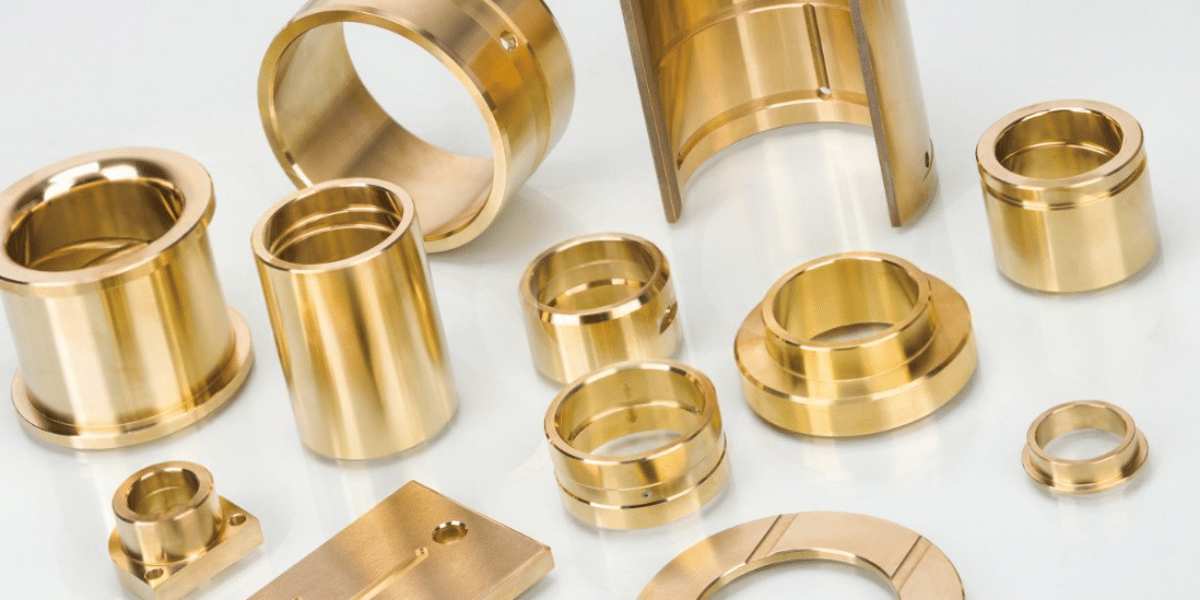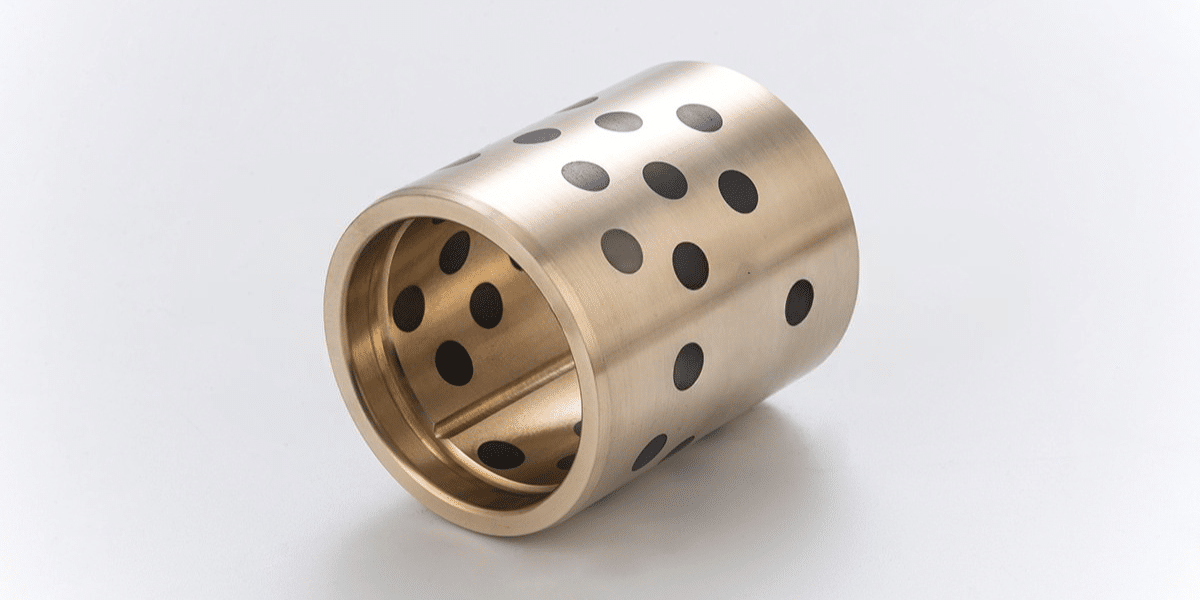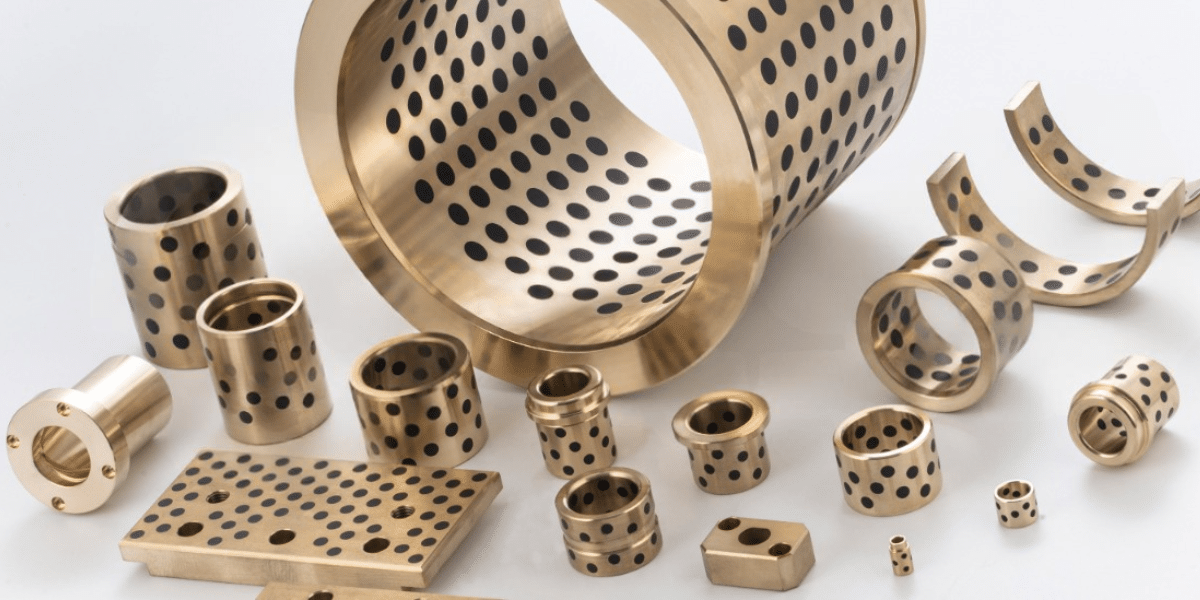
Aluminium Bronzes
Bearing Bushing
Aluminium bronzes Bearing Supplier, Solid Bronze Bushing Manufacturer, Heavy Maintenance
Aluminium Bronze as a Bearing Material
Aluminium bronze alloys are highly regarded in the bearing industry for their remarkable combination of strength, wear resistance, and corrosion resistance—particularly in seawater or aggressive chemical environments. These alloys typically contain 5–12% aluminium, often combined with elements like iron, nickel, or manganese to further enhance performance. Compared to tin bronzes, aluminium bronzes excel under heavy loads and harsh conditions, although lubrication is recommended for optimal lifespan.
Main Aluminium Bronze Grades for Bearings
Below is a summary of the most commonly used aluminium bronze grades for bearings, based on UNS (Unified Numbering System) designations. These grades are selected for their excellent balance of hardness, toughness, and durability, making them ideal for applications such as marine propulsion, aircraft landing gear, industrial bushings, and heavy machinery. Where applicable, European (EN) equivalents are also listed.
| UNS Grade | Common Names / Equivalents | Key Composition (%) | Typical Properties | Primary Bearing Applications |
|---|---|---|---|---|
| C95400 (C954) | Aluminum Bronze 9A1, Wearite 411, CA104 (BS/EN) | Cu: 83–87, Al: 10–11.5, Fe: 3–5 | High strength (tensile ~650 MPa), good wear resistance, moderate corrosion resistance | General-purpose bearings, bushings, gears; suited for heavy loads at moderate speeds |
| C95500 (C955) | Nickel Aluminum Bronze, C95520 | Cu: 78–82, Al: 10–11.5, Ni: 3.5–4.5, Fe: 2–4 | Exceptional yield and compressive strength (~450 MPa), high hardness (HB 190–240), superior corrosion resistance | High-load marine or industrial bearings, propeller shafts, valve components |
| C62300 | Bearing Bronze, C623 | Cu: 86–89, Al: 8–11, Fe: 4–6 | Tough, highly wear-resistant, lower thermal and electrical conductivity | Standard bearings in heavy-duty machinery; excellent compatibility with steel shafts |
| C63000 | Aluminum Manganese Bronze, AMS 4590 | Cu: 75–81, Al: 9–11, Mn: 3–5, Fe: 2–4 | High strength and toughness, good cavitation resistance | Marine propellers, high-stress bearings, aircraft landing gear |
| C63200 | Nickel Aluminum Bronze | Cu: 77–82, Al: 8.7–9.5, Ni: 4–5, Fe: 3.5–4.5 | Balanced tensile strength (~700 MPa), excellent fatigue resistance | Gears and high-stress bearings in aerospace and energy sectors |
Selecting the Right Aluminium Bronze Grade
-
C95400: Most versatile and widely used for general-purpose bearings.
-
C95500 & C63200: Ideal for marine or highly corrosive environments due to their nickel content.
-
Consider lubrication, shaft material, operating speed, load, and temperature when choosing a grade.
-
These alloys are castable and machinable and often benefit from heat treatment to achieve maximum hardness and durability.
For engineers or designers looking for grade-specific data, DIN/JIS equivalents, or custom bearing solutions, providing detailed operating conditions ensures the best material selection.
Aluminium bronzes, such as CC333G (CuAl10Fe5Ni5-C) and CC331G (CuAl10Fe2-C), are highly valued for their exceptional mechanical properties, corrosion resistance, and wear resistance. These alloys are particularly suitable for demanding applications, including bearing bushings, plate grooves, and other bronze parts.
Key Properties of Aluminium Bronzes:
- High Hardness and Strength:
Aluminium bronzes are harder and stronger than many other bronze alloys, making them ideal for heavy-duty applications. - Excellent Corrosion Resistance:
These alloys are highly resistant to corrosion, especially in marine and saline environments, due to the formation of a protective aluminium oxide layer. - Wear Resistance:
Their wear resistance makes them suitable for components subjected to friction and abrasion, such as bearings and bushings. - Good Machinability:
While they are harder than other bronzes, they can still be machined to precise tolerances. - Thermal and Electrical Conductivity:
Aluminium bronzes have moderate thermal and electrical conductivity, making them useful in certain industrial applications. - Resistance to Deformation:
They maintain their shape and strength under high loads and temperatures.
Applications of Aluminium Bronzes:
- Bearing Bushings:
Aluminium bronzes are widely used in bearing bushings due to their ability to withstand high loads, resist wear, and operate in corrosive environments. - Plate Grooves:
These alloys are used in plate grooves where resistance to wear and corrosion is critical, such as in marine equipment or heavy machinery. - Marine Components:
Their excellent corrosion resistance makes them ideal for marine applications, including propellers, pumps, and valves. - Industrial Machinery:
Aluminium bronzes are used in gears, nuts, bolts, and other components that require high strength and durability.
Alloy Specifications:
- CC333G (CuAl10Fe5Ni5-C):
- Composition: Copper (Cu) with 10% Aluminium (Al), 5% Iron (Fe), and 5% Nickel (Ni).
- Properties: High strength, excellent corrosion resistance, and good wear resistance.
- Applications: Heavy-duty bushings, marine hardware, and industrial components.
- CC331G (CuAl10Fe2-C):
- Composition: Copper (Cu) with 10% Aluminium (Al) and 2% Iron (Fe).
- Properties: Good corrosion resistance, moderate strength, and wear resistance.
- Applications: Bushings, plate grooves, and general-purpose components.
Advantages Over Other Bronze Alloys:
Types of Aluminium Bronze Alloys:
C95400: A common aluminium bronze alloy with good strength and corrosion resistance, often used in bushings and bearings.
C95500: Contains nickel and iron for enhanced strength and wear resistance, suitable for high-load applications.
C95800: A nickel-aluminium bronze alloy with excellent corrosion resistance, often used in marine applications.
Maintenance and Considerations
Lubrication: Proper lubrication is essential to minimize wear and extend the lifespan of aluminium bronze bearings.
Inspection: Regular inspection for signs of wear, corrosion, or damage is crucial to ensure reliable operation.
Compatibility: Ensure compatibility with the operating environment, including temperature, load, and exposure to corrosive substances.



